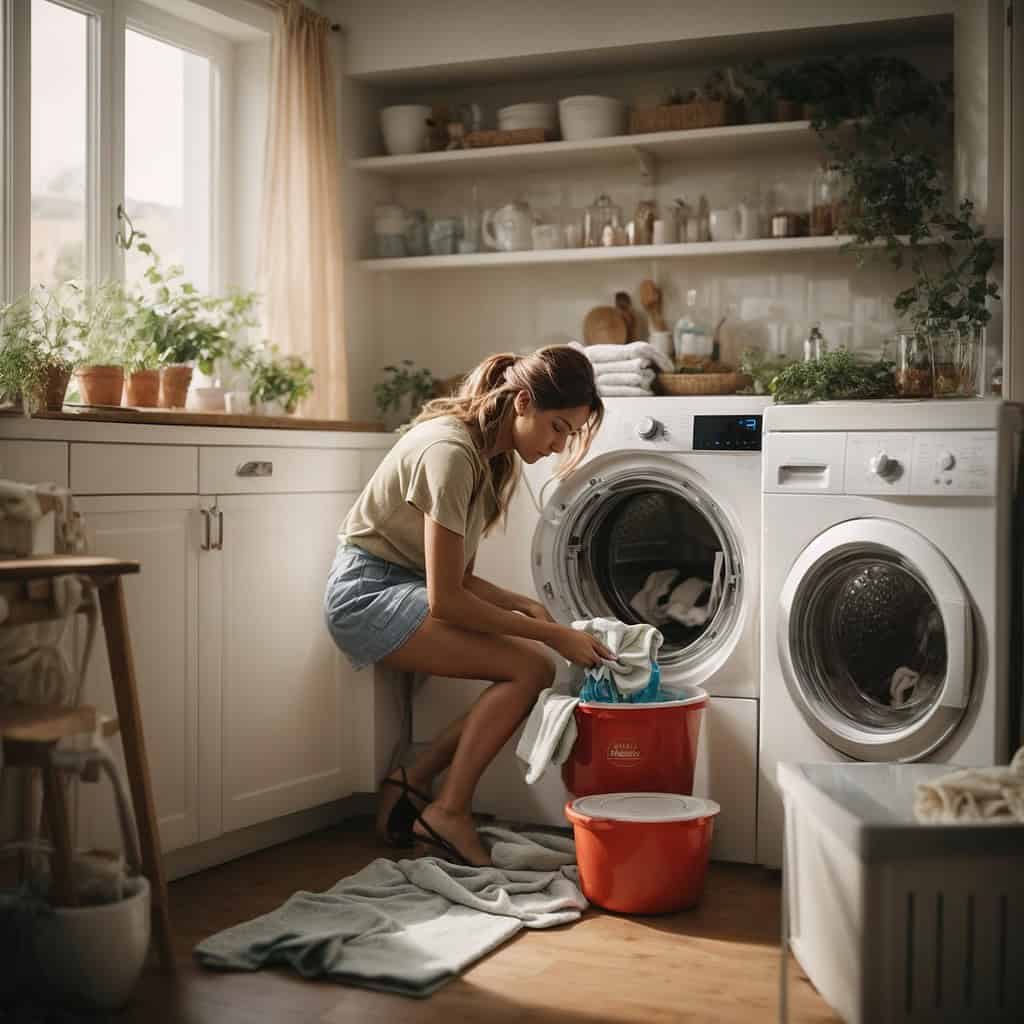If your gas stove won’t light, you’re not alone. In fact, 38% of Americans prefer gas stoves for their better temperature control and long life. But when it won’t ignite, it can really mess up your cooking and get you upset. Luckily, many gas stove ignition problems are easy to fix, either by yourself or with a pro’s help. I’ll show you 10 quick fixes to make your gas stove work right again.
TL’DR
- Gas stoves offer nearly instant heat and long-term cost savings compared to other stove types.
- Most gas stove ignition problems can be fixed at home, like cleaning out debris, tightening loose parts, and replacing broken igniters.
- Issues with burner caps or the spark module can also stop gas stoves from lighting.
- Checking the vent system and getting a pro if simple fixes don’t work are key steps.
- It’s important to follow safety rules when fixing gas stove problems to avoid dangers like carbon monoxide leaks.
7 Common Reasons Why Your Gas Stove Isn’t Working
If your gas stove won’t light, there are a few reasons why. First, make sure it’s plugged in and getting power. Check if the igniter connections are loose, as this can stop the burners from lighting. Also, make sure the gas is on and the circuit breaker hasn’t tripped.
Unplugged Stove
A simple reason your stove might not work is if it’s unplugged. Ensure it’s plugged into a working outlet. If it’s plugged in but not working, check the circuit breaker to see if it’s tripped.
Gas Supply Is Off
Another issue is if the gas to the stove is off. Find the gas shut-off valve, usually near the stove or behind it, and make sure it’s open. If the gas is on but the burners won’t light, there could be a gas line or stove problem.
Tripped Circuit Breaker
A tripped circuit breaker can also stop your stove from working. Look at your electrical panel and reset any tripped breakers. After resetting, try lighting the burners again. If it still doesn’t work, you might need a pro to fix it.
Fixing these common problems can often solve the issue and get your stove working again.
But if the problem doesn’t go away, it’s best to call a pro for help. 🆘
Clogged or Wet Igniter Issues
One common reason your gas stove won’t light is a clogged or wet igniter. If a burner lights slowly or the flame looks orange instead of blue, it might be a sign of a wet or dirty igniter. This happens if the igniter got wet after cleaning or if there’s grease and food around it.
To fix this, just take off the burner cover and let the igniter dry out before trying to light it again. Igniter problems often come from clogs after cleaning or spills. If the igniter is wet or dirty, it might take many clicks to light.
If your burners are slow to light or won’t light, it could be moisture in the ignition ports after cleaning. Keeping the igniter clean and dry is key for your gas stove to light up right and often.
Issue |
Cause |
Solution |
|---|---|---|
| Clogged or Wet Igniter |
|
|
Food Debris Clogging Burners
Food debris can block your gas stove’s burners, making it hard to light. Grease and spills can build up and stop the gas from flowing right. About 25% of people have trouble lighting their burners because of this.
Out of 8 people talking, 2 had trouble with a clogged burner. Older stoves, like a 20-year-old GE stovetop, often have this problem.
How to Clean Clogged Burners
To fix this, clean your gas stove burners often. Take off the burner covers and use warm water, soap, and a cloth to clean them well. A pin or wire tip cleaner can help remove debris from the igniter holes for better gas flow.
Removing the center black distribution cap and other steps can help clear blockages. Spills, boil-overs, bugs, and carbon deposits often cause these blockages. Some stoves have one jet burner, but others have two, so cleaning them differently is needed.
Keeping up with maintenance and cleaning helps ensure the gas flows right for lighting.
Keeping your gas stove burners clean stops future lighting problems. Regular care and attention keep your gas stove working well.
Pilot Light Problems
If your gas stove won’t light after cleaning, the pilot light might be the problem. Older stoves have a pilot light system. Newer ones use electric ignition. If your stove has an electric igniter and lost power, reset the circuit breaker for your stove. But if it’s a pilot light issue without an electric igniter, call a pro to fix it safely.
Why won’t the pilot light work? It could be turned off, gas supply issues, wrong oven parts, loose connections, or dirt. Cleaning the pilot light tip can fix a dirty or blocked light on gas stoves and ovens.
If cleaning doesn’t work, you might need a technician to check and repair your stove.
For gas stovetops, clean the cover over the pilot light and burner holes. For gas ovens, clean the pilot light tube and unit. If you can’t light it yourself, a technician can use a multimeter to check electrical parts.
A clogged igniter is the top reason a gas stove won’t light. Moisture in the igniter and loose connections are also common issues.

Faulty Spark Module or Igniter Switch
If your gas stove won’t light, a faulty spark module or igniter switch might be the problem. The spark module sends power to the igniter. This igniter then makes a spark to light the gas and the burners.
If the spark module is broken, you might not hear the stove clicking. You won’t get a spark to light the burners.
Signs of a faulty spark module or igniter switch include no sparks or yellow/orange sparks instead of blue-white. A bad igniter switch can also make the burners not light or spark too much, even when turned off.
Diagnosing a Broken Spark Module
To check if the spark module is broken, look at the igniter for damage or issues. If it’s not sparking or the spark looks off, you might need a new spark module. Sometimes, the spark module itself is the problem. Then, you’ll need a pro to replace it.

Changing a faulty spark module or igniter switch is usually easy and can be done in under 45 minutes. Just follow the maker’s guide or a repair manual to fix your gas stove quickly.
Gas stoves have many perks like fast heat, saving money over time, and cooking during power cuts. But, if your gas burner won’t light, fix it fast for safe and efficient use.
Misaligned Burner Cap
Keeping your gas stove in good shape is key for cooking well and safely. A common problem is a misaligned burner cap. The burner cap is crucial, along with other parts like the burner base and igniter.
A misaligned burner cap can really affect your gas stove’s performance. It can lead to uneven flames or slow ignition. This means your heating won’t work well and could be a safety risk. Sometimes, it might not even light up. It’s important to check and adjust the burner caps often. This is especially true after cleaning the stove, as caps can get moved. If the cap is right but the burner won’t light, you might need a pro to fix it.
By keeping an eye on your burner caps, you can keep your gas stove working well and safely. Regular maintenance and quick fixes help your stove stay in top shape.
Defective Thermocouple
Is your gas stove not lighting up? A faulty thermocouple might be the reason. This safety device checks the pilot light flame and cuts off gas if it goes out. If it’s broken, the pilot light may light up but then go out when you turn the knob.
Replacing a Faulty Thermocouple
Fixing a bad thermocouple is easy and can be done by a pro. First, you’ll need to take off the lead and connection nut, then unscrew the bracket nuts. Next, put in a new thermocouple and tighten everything back up.
If you smell gas, get out fast and call the experts. Keeping your gas stove clean, including the pilot light and thermocouple, stops future problems and keeps it safe.
Thermocouple Troubleshooting Tips |
|---|
|

Vent System Issues
If your gas stove’s burners light easily but then go out, the vent system might be the problem. The vent can make the flame unstable, causing it to go out. The downdraft vent, especially, can mess with the flame and how well you cook.
Try making the blower slower or upping the burner setting to fix this. If that doesn’t work, it’s time to call a pro to check and fix it.
Be careful with gas cooktops that use flame-sensing ignitions, especially with a downdraft vent. Tweaking the downdraft vent speed or the flame setting might make your burners work better.
Some vent system problems need an expert’s touch. Things like blockages or vents not sealing right can make gases go back around, cutting off oxygen and messing with the direct vent system. Clearing the glass and checking the system can show if there are issues with air intake or exhaust at the vent cap.
If you think a vent issue is making your gas stove act up, get a skilled technician’s help. They can figure out what’s wrong and fix it, making sure your stove works safely and efficiently.
Summing Up
Fixing common gas stove problems is easy with some basic steps. You can fix clogged burners and ignition issues on your own. Clean the pilot light area and remove debris from the gas supply. Check the burner parts to solve ignition problems.
Fixing electrical switch or thermocouple issues also helps your stove work safely and well.
If problems don’t go away or you think there’s a gas leak, call a pro. Quick repairs stop gas leaks and keep you safe. Different stoves need special fixes, so an expert is best for tough problems.
This guide shows how to keep your gas stove safe and working well for a long time. Keep burner heads and caps right and clean your stove often for best performance. With a bit of care, your gas stove will be a trusted part of your kitchen.

Dave Johnson is a mechanical engineer with over two decades of experience in the semiconductor industry. He’s known for his exceptional ability to fix almost any mechanical and electronic device, from leaking faucets to lawnmowers – he is definitely your go-to neighbor for household maintenance issues. When he’s not elbow-deep in his garage doing household repairs, you’ll find him sharing his expertise on fixing everyday maintenance challenges on this site.


